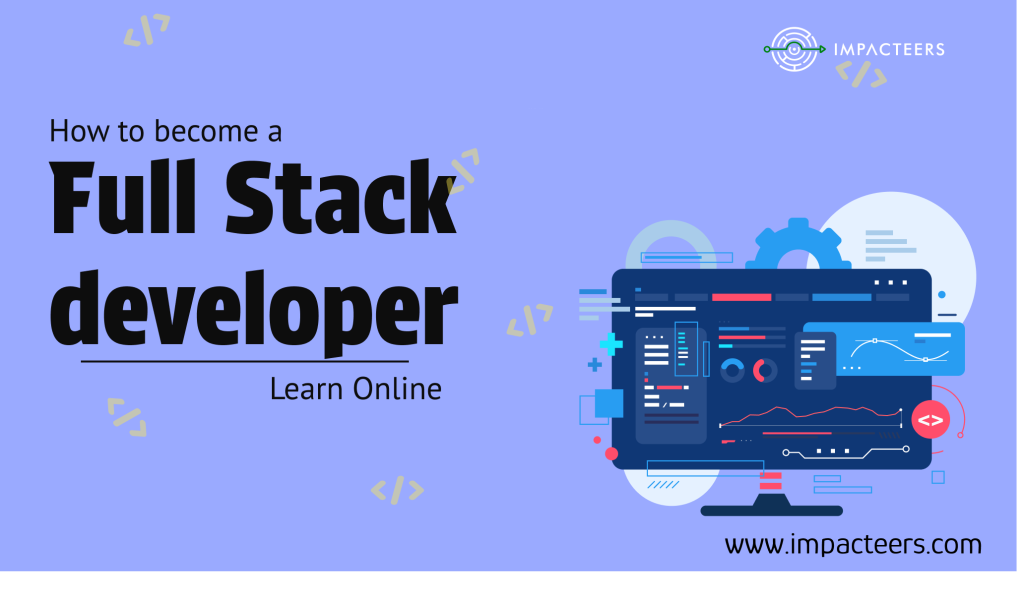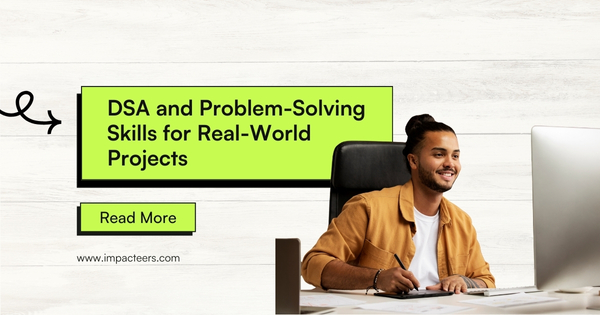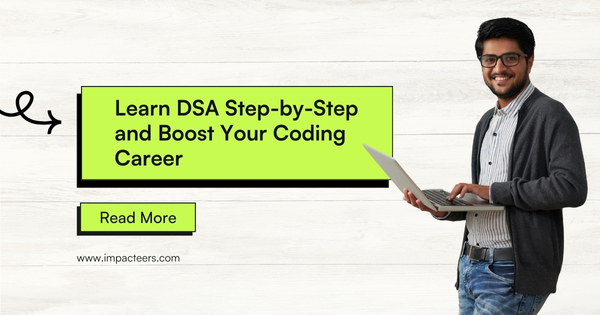How to become a full stack developer starts with understanding what this role entails. A full stack developer is someone proficient in both the front-end (user-facing) and back-end (server-side) aspects of web development. This role requires a diverse skill set, including knowledge of programming languages, databases, and version control systems, among other tools.
Now, let’s dive into the specific steps to kickstart your journey and learn how to become a full stack developer successfully.

Front-End vs. Back-End
- Front-End Development: Involves working on the parts of the application that users interact with. This includes layout, design, and user interface elements like buttons, forms, and images. Technologies commonly used are HTML, CSS, JavaScript, and frameworks like React, Angular, or Vue.js.
- Back-End Development: Focuses on the server-side logic and database interactions that power the application. Back-end developers work with languages like Node.js, Python, Ruby, Java, and PHP and manage databases like MySQL, PostgreSQL, or MongoDB.
Explore more on Impacteers career path to get a detailed guide on learning Full Stack Development.
Visit Now>>> https://www.impacteers.com/home/jobs-dashboard
About us >>>https://blog.impacteers.com/

Technical Skills You Need to Learn How to Become a Full Stack Developer
To become a successful full stack developer, you’ll need to master a range of technical skills that cover both front-end and back-end development. Here’s a breakdown of the essential skills:
1. HTML/CSS
- HTML (HyperText Markup Language) is the building block of any website. It structures content on the web.
- CSS The HTML elements have been styled to make them visually appealing using CSS (Cascading Style Sheets).
2. JavaScript
JavaScript is the backbone of front-end development, enabling interactive features like buttons, animations, and dynamic content updates. Modern JavaScript frameworks such as React, Angular, and Vue.js are essential tools for efficient development.
3. Back-End Languages
You’ll need to know at least one server-side language. Popular choices include:
- Python
- Ruby
- PHP
- Java
- Node.js (JavaScript on the server side)
4. Databases and SQL
Understanding how to work with databases is crucial. Some of the required skills are as follows:
- SQL for PostgreSQL or MySQL relational databases.
- NoSQL databases like MongoDB for handling large-scale, unstructured data.
5. Version Control (Git)
Version control allows multiple developers to collaborate on the same project without overwriting each other’s work. Git is the industry standard for version control and is a must-know tool for full stack developers.
6. APIs and RESTful Services
Developers often integrate third-party services via APIs. Understanding how to work with APIs (Application Programming Interfaces) and build RESTful services is vital for back-end development.
7. DevOps Tools and Cloud Services
With the rise of cloud computing, full stack developers are also expected to be familiar with cloud platforms like AWS (Amazon Web Services) or Microsoft Azure, and DevOps practices such as CI/CD (Continuous Integration/Continuous Deployment).
Course Guide >>>https://www.impacteers.com/home/courses
Popular Tools to Learn How to Become a Full Stack Developer
The right tools can make a developer’s life much easier. Here are some commonly used tools and frameworks for full stack development:
- React.js, Angular, Vue.js – Popular front-end frameworks for building dynamic web interfaces.
- Node.js, Django, Ruby on Rails – Back-end frameworks that streamline server-side programming.
- Docker – Used for creating lightweight, isolated environments to run applications.
- Heroku, AWS, DigitalOcean – Cloud platforms that provide hosting and server management.
Step-by-Step Process to Learn how to become a Full Stack Developer
Step 1: Learn the Basics of Web Development
Begin with HTML, CSS, and JavaScript. Use free resources from Impacteers to build your foundational skills.
Step 2: Choose a Front-End Framework
Pick a front-end framework such as React, Vue, or Angular. Focus on mastering one framework before moving on to others.
Step 3: Learn a Back-End Language to become a full stack Developer
Choose a back-end language that fits your goals, such as Python with Django, JavaScript with Node.js, or Ruby with Rails.
Step 4: Master Databases
Learn how to connect your application to a database. Study NoSQL databases like MongoDB while begin with SQL databases like MySQL or PostgreSQL.
Step 5: Use Git for Version Control
Learn how to track changes in your projects and collaborate with other developers using Git. Platforms like GitHub and GitLab allow you to store and share your projects.
Step 6: Build and Deploy Full-Stack Projects
Once you’ve acquired the necessary skills, start building full-stack projects that combine front-end and back-end elements. Deploy your projects using cloud services like AWS or Heroku.
Step 7: Create a Portfolio
Your portfolio is a showcase of your abilities as Full Stack Developer. Include your best projects and explain the technologies used, the challenges faced, and how you solved them.
Step 8: Apply for Jobs or Freelance Work
Once you’re confident in your skills and have built a solid portfolio, start applying for full stack developer jobs or freelance gigs.
Salary Package for a Full Stack Developer
Full stack developers in India can expect competitive salaries, especially with the growing demand for skilled developers. Here’s a breakdown:
- Entry-Level Full Stack Developer: ₹4,00,000 – ₹6,00,000 per year.
- Mid-Level Full Stack Developer: ₹8,00,000 – ₹12,00,000 per year.
- Senior-Level Full Stack Developer: ₹15,00,000 – ₹25,00,000+ per year, depending on experience and location.
Conclusion
Full stack development is a versatile and rewarding career with a bright future in 2024 and beyond. By mastering both front-end and back-end technologies, creating real-world projects, and, you can position yourself for success in this fast-growing field. With determination, continuous learning, and hands-on experience, you can become a full stack developer and take advantage of the exciting job opportunities that come with it.
FAQs
1. How much time does it requires to become a full stack developer?
It can take anywhere from 6 months to 2 years, depending on your dedication and whether you opt for formal education, online courses, or bootcamps.
2. Is there any degree required to become a full stack developer?
No, many successful developers are self-taught or have attended coding bootcamps. However, a degree in computer science can be beneficial.
3. What are the best languages for full stack development?
For the front-end, JavaScript is a must. For the back-end, popular options include Node.js, Python, and Ruby.
4. What is the average salary of a full stack developer in India?
Entry-level full stack developers can expect around ₹4,00,000 – ₹6,00,000, while experienced developers can earn up to ₹25,00,000+ per year.



Post Comment